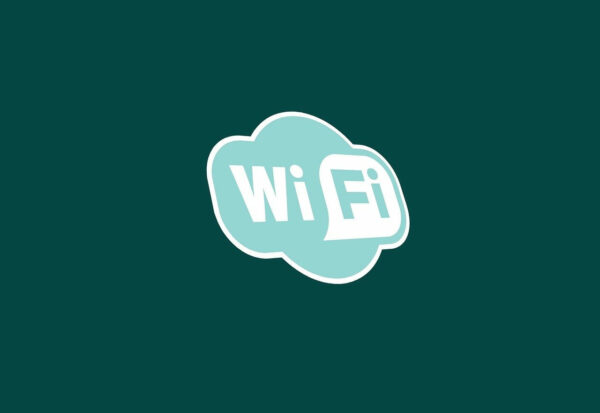✅ Last checked on
In today’s digitally connected world, Wi-Fi has become an integral part of our lives, enabling seamless communication and internet access. The term “Wi-Fi” stands for “Wireless Fidelity,” and it refers to the technology that allows devices to connect to the internet wirelessly. However, there’s more to Wi-Fi than meets the eye.
This comprehensive overview will delve into the various Wi-Fi standards, their evolution, benefits, and the impact they have on our everyday lives.
Wi-Fi Standards: A Brief History

Wi-Fi technology has come a long way since its inception. Let’s take a journey through its evolution:
Wi-Fi Standards: The Early Days
In the late 1990s, the IEEE 802.11 standard laid the foundation for wireless networking. This standard operated in the 2.4GHz frequency band and offered data rates of up to 2 Mbps. It paved the way for the development of subsequent standards.
Wi-Fi Standards: The 802.11b/g Era
The early 2000s saw the emergence of the 802.11b and 802.11g standards. These brought significant improvements in data rates, with 802.11g reaching speeds of up to 54 Mbps. These standards made Wi-Fi more practical for everyday use and helped popularize wireless internet.
Wi-Fi Standards: The 802.11n Revolution
Around 2009, the 802.11n standard marked a major milestone. It introduced MIMO (Multiple-Input Multiple-Output) technology, which allowed for faster speeds and better coverage. With data rates surpassing 100 Mbps, 802.11n became the go-to standard for many users.
Wi-Fi Standards: The Present and Future (802.11ac/ax)
Today, the 802.11ac standard, also known as Wi-Fi 5, dominates the landscape. Operating in the 5GHz band, it offers impressive speeds of up to 1 Gbps. Its successor, 802.11ax or Wi-Fi 6, further enhances efficiency in crowded areas and elevates the user experience.
Wi-Fi Standards: Exploring the Benefits
Wi-Fi standards have evolved for good reason. Let’s explore the benefits they bring to our connected lives:
Enhanced Connectivity
With each new standard, Wi-Fi technology has improved its ability to provide reliable and consistent connectivity. This is especially crucial as we connect more devices to the internet than ever before.
Faster Data Transfer
The advancement from one standard to another has consistently increased data transfer speeds. This means quicker downloads, smoother streaming, and enhanced online experiences.
Support for Multiple Devices
Modern Wi-Fi standards are designed to handle a multitude of devices simultaneously. This is a game-changer in households and workplaces where numerous devices rely on a single Wi-Fi network.
Improved Security Features
As Wi-Fi technology has progressed, so has its security. WPA3, the latest security protocol, provides robust protection against unauthorized access and ensures the privacy of transmitted data.
Wi-Fi Standards: A Look into the Future
Wi-Fi technology continues to evolve, and the future holds exciting prospects:
Wi-Fi 7: The Next Frontier
Wi-Fi 7, also known as 802.11be, is on the horizon. With projected speeds of up to 30 Gbps, it aims to revolutionize industries like augmented reality, virtual reality, and 8K streaming.
Internet of Things (IoT) Integration
Future Wi-Fi standards will focus on seamless integration with IoT devices, making our homes and cities smarter and more interconnected than ever.
Enhanced Energy Efficiency
Upcoming standards will prioritize energy efficiency, prolonging the battery life of Wi-Fi-connected devices and reducing their environmental impact.
Frequently Asked Questions
What is the latest Wi-Fi standard available?
The latest Wi-Fi standard is 802.11ax, also known as Wi-Fi 6. It offers improved efficiency and performance in congested areas.
Will older devices work with newer Wi-Fi standards?
Yes, newer Wi-Fi standards are designed to be backward compatible, allowing older devices to connect to the network. However, they will operate at the speed of the older standard.
How can I improve my Wi-Fi signal at home?
You can improve your Wi-Fi signal by placing your router in a central location, minimizing interference from other devices, and using range extenders if necessary.
Is it safe to use public Wi-Fi networks?
Public Wi-Fi networks can pose security risks. Use a Virtual Private Network (VPN) when connecting to public Wi-Fi to encrypt your data and protect your privacy.
What is the difference between 2.4GHz and 5GHz Wi-Fi?
The main difference is the frequency band they operate on. 2.4GHz offers better range but slower speeds, while 5GHz provides faster speeds but over a shorter range.
When can we expect Wi-Fi 7 to be available?
Wi-Fi 7 is still in development, but it’s expected to be available in the next few years as the technology matures.
Conclusion
In conclusion, the world of Wi-Fi standards is ever-evolving, catering to our increasing demands for faster, more reliable, and secure wireless connectivity. From the early days of 2 Mbps connections to the upcoming Wi-Fi 7’s potential speeds of 30 Gbps, the journey has been remarkable.
As we embrace the benefits of enhanced connectivity, faster data transfer, and IoT integration, it’s clear that Wi-Fi will continue to shape the way we live, work, and interact with the digital world.